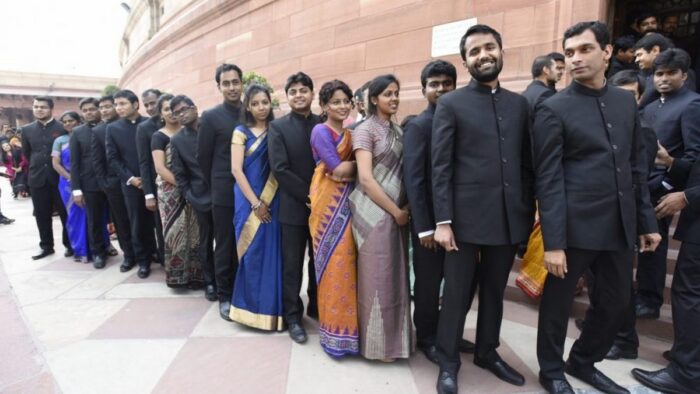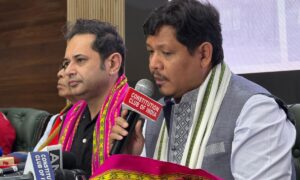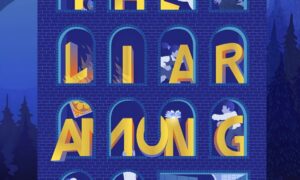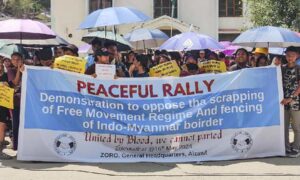
File Picture
An uncommon trait observed among the Mizos now and over half a century ago was their passion for writing. Your correspondent recalls a prescient remark of R.Natarajan, (a distinguished member of the Assam cadre of the IAS who joined the UN/World Bank later ) who was Deputy Commissioner Mizo District during 1966-68 covering the entire area under the present Mizoram state and led the pacification efforts during the height of the Mizo insurgency that ” only shortage of papers stands in the way of publication of more tabloids and newspapers in Mizo language”.
He added that” duplicators for making copies were as much in demand as Hockey sticks”, then the most popular outdoor team game in the District. High literacy, early exposure to English medium education and access to the Christian missionary colleges in Shillong and Calcutta enabled a good number of young Mizos, Khasis and Nagas to clear the IAS etc Exam from the 1950’s as UPSC Civil service exam was called then.
In fact the hill tribes of the NE were well ahead of the scheduled tribes of central India and elsewhere in education and social development and dominated not only the posts reserved for the tribes in the IAS, the Indian Foreign service and other services but also secured positions in the general list. Thus a positive attitude to competitive exam created a culture of joining the Central Civil service cadres and also the armed forces thrived in the NE Hills till 1980’s. And, in all these years a good number of officers from the north east served in various state cadres of All India services and at the centre with distinction such as J.M.Lyngdoh, a Bihar cadre IAS officer hailing from Meghalaya and recipient of Magsaysay Award in 2003 for bold initiative to carry forward the electoral reforms as the Chief Election Commissioner. Phrang Roy, also a Khasi IAS officer from Meghalaya borne in Maharashtra cadre held important positions in the FAO of the UN and the IFAD in Rome .H.T Sangliana, van IPS officer from Mizoram served in Karnataka and is remembered for the efforts he made to improve policing of Bangalore.
However, there has been a sea change in the scenario after the change in the pattern of the UPSC Civil service exam with the introduction of a common exam for all services, a qualifying Preliminary examination followed by the Mains Exam and the Personality Test; and opening Civil service exam to virtually all degree holders including the Medical , Ayurvedic and veterinary streams. Consequent changes in the requirements for clearing the exams such as basic skills in science and computation, capacity to write short answers to many questions and limiting the same to the number of words etc really meant a departure from the essay type answers and lesser emphasis on English language skills. The latter was evident from reduction in the marks for the Personality Test to 275 for all services and the facility to write answers in languages other than English.
To these must be added three redeeming features: First, raising the upper age limit to 32, 35 and 37 for the general, OBC and SC/ST candidates respectively :Second, raising the number of attempts the candidates are allowed to make- defying all logic to 6 and 9 for the first two and “no limits” for the third and differently abled: Third, reservation policy fixing 7.5% ,15%,27% and 10% of posts for the Scheduled Tribes, Scheduled castes and Other Backward classes and econmically weaker sections respectively and 4% for differently abled which mean 64%plus posts in the reserved category. More significantly, the inclusion of several groups in the list of Scheduled Tribes and the possibility of more inclusion from Assam have made it very tough for the tribal aspirants from the NE Hill states to clear the exam. Also the fact fact that roughly 60% of the successful candidates these days are engineers indicate how things have changed and not for the better for civil service aspirants from the hill tribes as the posts for them even in the ST category have shrunk. In fact it is not the exam marks but the reservation scheme that determines placement in the IAS and other services which is certain to deter only but the determined to appear in what is arguably the toughest Civil service competitive exam in the world. Only 10564 candidates have cleared the 2020 Prelims out of several lakhs who appeared for the same and will now sit for the Mains exam to compete for only 796 posts .
This year’s UPSC list of 829 candidates recommended for appointment to the IAS and other services on the basis of the exam held in 2019 contains few recognizable names of NE tribals and reportedly only 5 Mizos cleared it since 2000 and just one for the IAS in 2014 which is in sharp contrast with the situation till the 1970’s when the Mizos, Khasis and Nagas formed the largest Tribal Group in the services in every batch.
In this scenario, the reported decision of the government of Mizoram to provide” scholarships” to the IAS aspirants of Mizoram to facilitate their study at the Delhi based private coaching Centres is indeed a bold move just as Mizoram is possibly the only state having an ” Youth Commission” for all round development of the state’s Youth. However, success would depend on careful selection of coaching centre as there are many such private” IAS Coaching institutions” in Delhi and its professional capacity to cater to the special needs of the Mizo aspirants. While non profit societies like SAMKALP in Delhi provide coaching at nominal cost and an Institute at Guwahati – Vivekananda Civil service Academy has begun functioning on the same lines, there are established private players like the Vision IAS with facilities in Delhi and other cities for providing both online and class room teaching and study materials prepared by expert faculty to meet the special needs of aspirants. The initiative will succeed only when the aspirants get proper support to clear the Prelims because it is the first hurdle which candidates without some grounding in science and maths of the 12 th class level find hard to cross and it is always the first hurdle in any relay race that counts! The “scholarships scheme” proposed would make sense only when coaching for the Prelims exam is put in place; and in this private coaching Centres could really help as they are geared to coach for both Prelims and Mains exam and the personality test. And, the professional counseling that the coaching Centres provide for selecting the optional subjects and for the personality test by holding “Mock interviews” and “Personality development program “could really help the Mizo aspirants only when suitably modified to address their strengths and weaknesses as for instance in articulation- both in speaking or answer or essay writing to produce best results. Thus careful selection of Delhi based partner coaching centre is crucial for success of the initiative as left to themselves, the selected aspirants might not be able to choose the right coaching centre ; and even after selecting the “partner institution” there may be a need for an oversight body to watch how effectively the coaching raised the capacity and confidence level of the aspirants.
There’s good hope for success because of the Mizos innate capacity to accept new things in life. The way the Mizos took to football when the game was introduced after restoration of peace in the 1980’s and came on top of the National level gives hope that the Mizos will succeed in reaffirming their presence in the IAS and very soon inspiring other NE states.
[the_ad id=’22722′]


















